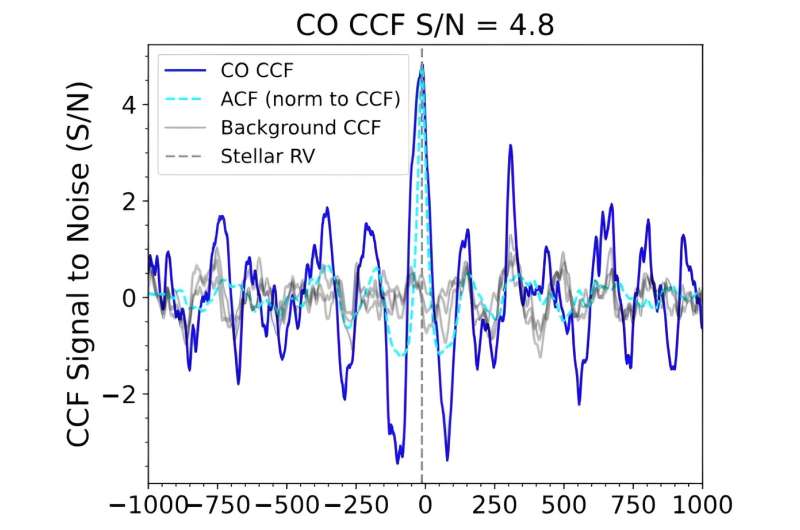May 21, 2024 report
This article has been reviewed according to Science X's editorial process and policies. Editors have highlighted the following attributes while ensuring the content's credibility:
fact-checked
preprint
trusted source
proofread
Observations investigate properties of nearby brown dwarf HD 33632 Ab

Using the Keck II telescope in Hawaii, astronomers have observed a nearby brown dwarf known as HD 33632 Ab. Results of the observational campaign, presented in a paper published May 14 on the pre-print server arXiv, provide more insights into the properties of this substellar object and its atmosphere.
Brown dwarfs (BDs) are intermediate objects between planets and stars, occupying the mass range between 13 and 80 Jupiter masses (0.012 and 0.076 solar masses). Given that BDs have similar temperatures and atmospheric properties to gas giant exoplanets, they are more massive and brighter at the same age, which allows astronomers to characterize their atmospheric properties more easily.
At a distance of 86 light years, HD 33632 Ab is a BD companion to the solar-mass star HD 33632 A, which is of spectral type FV8. It has a subsolar metallicity and is estimated to be 1–2.5 billion years old. The brown dwarf has a mass of about 46 Jupiter masses and is separated from its host by approximately 20 AU.
A team of astronomers led by Chih-Chun Hsu of Northwestern University in Evanston, Illinois, has employed the Keck Planet Imager and Characterizer (KPIC) to conduct high-resolution spectroscopy of this system.
"We present the Keck/KPIC high-resolution K-band spectroscopy of the benchmark brown dwarf mass companion HD 33632 Ab, which provided companion radial and projected rotational velocities as well as CO and H2O abundances," the researchers wrote.
The observations found that HD 33632 Ab has projected rotational and radial velocities of 53 and -8 km/s, respectively. The system's orbital period was measured to be about 74 years, and the orbital eccentricity was calculated to be 0.25.
The collected data indicate that HD 33632 Ab is less massive and at a closer distance to its host than previously thought. The mass of the brown dwarf was found to be some 37 Jupiter masses, while its separation from HD 33632 was estimated to be approximately 18 AU.
Based on the KPIC spectra of HD 33632 Ab, the astronomers detected carbon monoxide and water vapor in its atmosphere. However, they did not find any traces of methane, which could be due to several factors, including the fast rotation of the brown dwarf or the relatively low signal-to-noise ratio of the obtained spectra.
The study found that HD 33632 Ab has a metallicity at a level of 0.0 dex and a carbon to oxygen ratio of 0.58, which is generally consistent with the properties of the host star. The researchers noted that these results are expected for BD companions formed through gravitational core collapse or disk instability.
Summing up the results, the authors of the paper underlined that the new results for HD 33632 Ab could help us advance our knowledge about the formation and evolution of brown dwarfs in general; however, a larger sample of studied close-in BDs is still needed in order to make significant improvements in this matter.
More information: Chih-Chun Hsu et al, Rotation and Abundances of the Benchmark Brown Dwarf HD 33632 Ab from Keck/KPIC High-resolution Spectroscopy, arXiv (2024). DOI: 10.48550/arxiv.2405.08312
Journal information: arXiv
© 2024 Science X Network




















